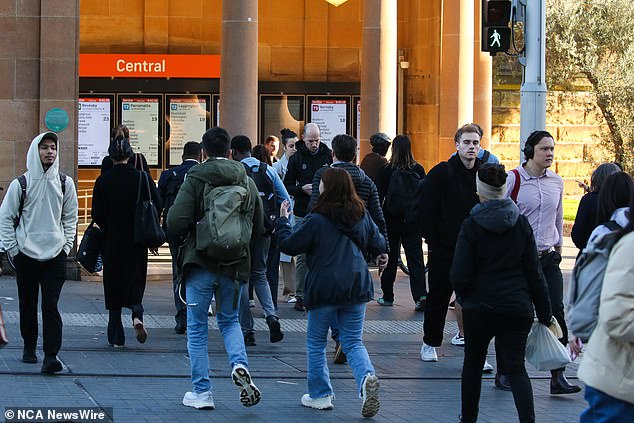The major Aussie cities where rent has increased by more than $18,000
- Australians pay an average of $15,000 extra in rent
- Two cities recorded increases of more than $18,000
A new report shows that renters in Australia are now paying an average of almost $15,000 more per year to rent a home since the pandemic.
Everybody’s Home has released the data showing the shocking annual rise in rents that has devastated Australians living in capital cities since the start of the Covid pandemic.
The data showed that since January 2020, renters were spending on average almost $15,000 more per year to rent a home, but for people living in Sydney and Perth that amount was over $18,000 more per year.
Everybody’s Home spokesperson Maiy Azize said the biggest cost of living for most people in Australia is having a roof over their heads.
“The sharp rise in rents is pushing more and more people into serious housing problems and homelessness,” she says.
“People are sacrificing necessities to pay rent, living in squalid unhealthy conditions because they have nowhere else to go, and forgoing important life decisions because of housing insecurity.
“Australians are being priced out of the cities where they work, which could impact the liveability of our cities and the quality of essential services.”
The report shows that renters in capital cities are paying an average of $14,700 more per year to rent a home, and $9,600 more per year to rent a unit compared to early 2020.
A new report shows that renters in Australia are now paying an average of almost $15,000 more per year to rent a home since the pandemic
The cost of renting a unit in Adelaide ($10,192), Brisbane ($10,348) and Sydney ($10,452) were all above average, while the cost of renting a unit in Perth was well above average, at $14,508 more than four years ago.
Two capital cities recorded above-average increases to rent a home, with people in Perth paying more than $18,304 than they did four years ago and renters in Sydney paying an extra $18,512 in rent each year.
Renters in Canberra ($5616), Darwin ($14,612), Hobart ($3536) and Melbourne ($10,764) still paid thousands of dollars more to rent a home, but less than the average increase.
The higher costs to rent a unit in cities below average were Canberra ($4784), Darwin ($4524), Hobart ($2184) and Melbourne ($7124).
The report was released to mark the start of Anti-Poverty Week, with Ms Azize calling on all Australians to support their call for more social housing to solve Australia’s housing crisis.
Ms Azize said there is a huge social housing shortage of 640,000 homes, which will rise to almost a million homes in 20 years.
“We need to end the shortage and make social housing an option for more Australians – not just a safety net for those on the margins,” she said.
“We also ask all candidates vying for votes in the upcoming elections to sign our Roadmap to Reform, which includes the phasing out of tax breaks for real estate investors.”

Everybody’s Home has released the data showing the shocking annual rise in rents that has devastated Australians living in capital cities since the start of the Covid pandemic
The proposed reform sets out four factors to dramatically rethink how Australia could tackle its housing crisis, including increasing Centrelink payments and introducing nationally consistent protections for renters.
This included limiting rent increases, longer leases and a minimum standard of living.
The roadmap also included phasing out capital gains tax and negative gearing, and aiming for almost a million social housing units over the next twenty years.
Ms Azize said poll after poll showed most voters wanted action on investor tax breaks because they were unfair and driving up the cost of housing for everyone.
‘Poverty is a policy choice. Unaffordable housing is a policy choice. It doesn’t have to be this way,” she said.
“The federal government has the power to make Australia a fair and affordable place to live. It is time for the government to take action that reflects the severity of this deep, long-lasting crisis.”
